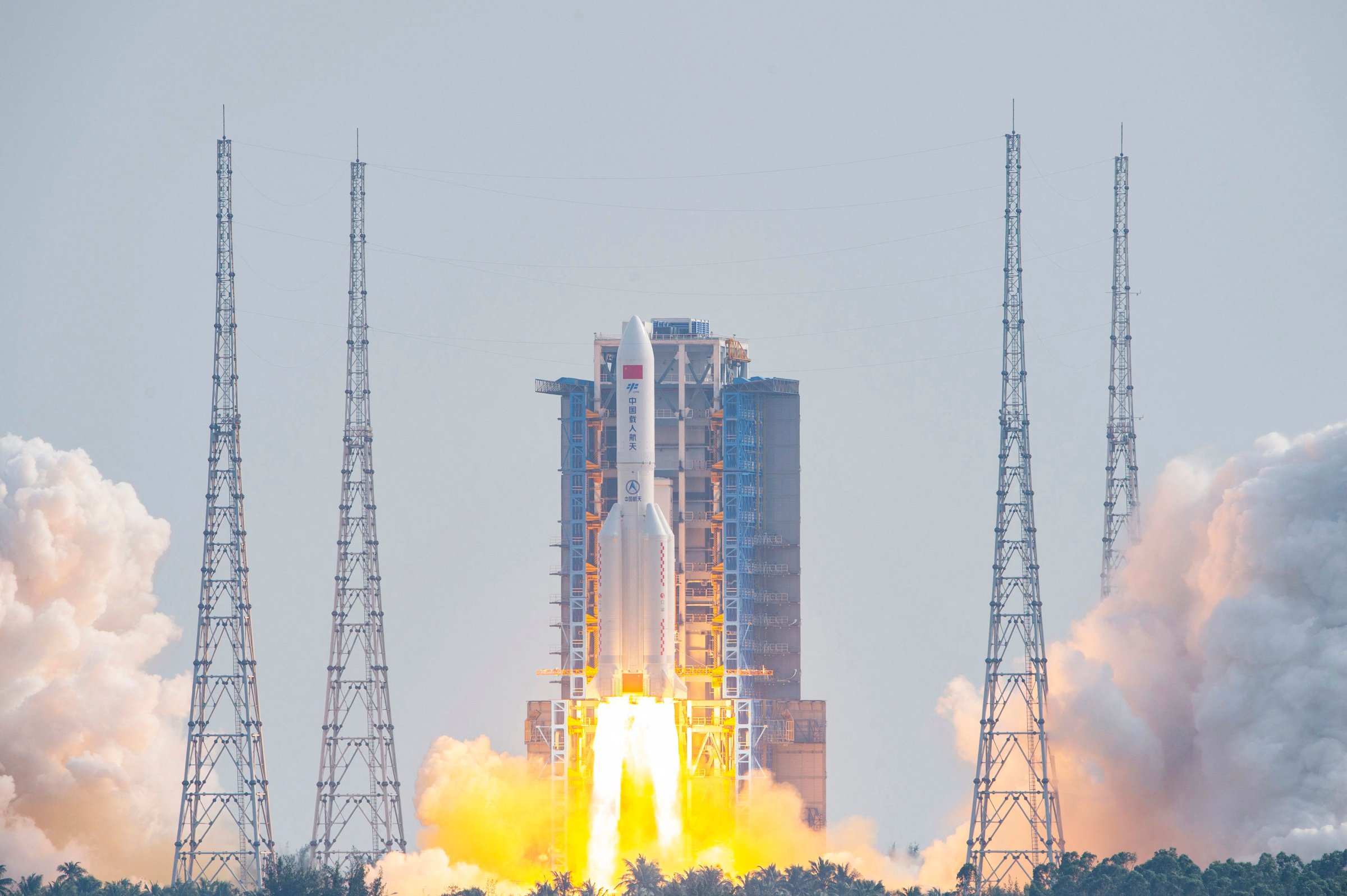
There’s a lot that China would like you to pay attention to when it comes to its just completed Tiangong (“Palace in the Sky”) space station—and there’s one thing the country would very much like you to ignore.
On the upside, there’s the thousand or more scientific studies that crew members hope to carry out over the decade or so the station will be in operation; there are the 17 nations that will be flying experiments, and perhaps some astronauts, along with the Chinese taikonauts; and there’s the very speed with which the three module station was built.
The core module—the Tianhe (“Harmony of the Heavens”)—was launched on April 29, 2021; the second module—the Wentian (“Quest for the Heavens”)—went aloft on July 24, 2022; and it was just this week, on Oct. 31 at 3:37 a.m. ET, that a Long March 5B rocket blasted off with the third and final component—the 22-ton Mengtian module (“Dreaming of the Heavens”) measuring 18 m (59 ft.) long, 4.2 m (13.8 ft) wide—completing the T-shaped station.
As for that bit the Chinese would just as soon you not discuss: There was another piece of hardware—a 10-story tall, 23-ton first stage of the Long March 5B—that reached space along with the Mengtian before beginning an uncontrolled, somersaulting plunge back to Earth causing it to land, well, no one could say where.
This is not the first time the Chinese have threatened the planet with a falling piece of Long March flotsam. The first stage of the rocket that launched both the Wentian and Tianhei followed a similar uncontrolled reentry path—both crashing into the Indian Ocean. The very first launch of the Long March 5B, in 2020, resulted in an impact that scattered debris across portions of Ivory Coast, though no one was hurt.
“Once again,” said NASA Administrator Bill Nelson in a statement early this morning as the whereabouts of the rocket stage remained unknown, “the People’s Republic of China is taking unnecessary risks with the uncontrolled rocket stage reentry of their Long March 5B rocket stage.”
He continued: “They did not share specific trajectory information which is needed to predict landing zones and reduce risk. It is critical that all spacefaring nations are responsible and transparent in their space activities and follow established best practices, especially, for the uncontrolled reentry of … debris that could very well result in major damage or loss of life.”
Reassuringly, that risk to life is relatively small, since more than 70% of the world’s surface is water and much of the planet’s land mass is uninhabited. Henry Hertzfeld, a research professor at George Washington University’s Space Policy Institute, told TIME: “I wouldn’t lose sleep over this. Any one person’s chance of getting hit by lightning is probably greater.”
Not long after Nelson made his statement, the good news went around that Earthlings appear once again to have dodged a Long March bullet. As the U.S. Space Command tweeted today, the spent first stage reentered the atmosphere and splashed down harmlessly in the south central Pacific Ocean at 6:01 a.m ET.
Still, it remains not only provocative but perplexing that China doesn’t take greater precautions with its Long March 5 Bs. Disposing of a rocket stage safely, after all, is a relatively easy thing to do. As a rule, government and private sector launchers keep a reserve of fuel in the spent stage’s tanks so that its engine can re-fire, aiming it for a guaranteed oceanic splashdown. SpaceX goes further, landing the first stages on an ocean barge and reusing them.
“We have the technology to control the reentries,” says Hertzfeld. “Why China isn’t using it, I don’t know.”
The question is especially mystifying since China is also a member of the 1972 Liability Convention, a pact brokered by the United Nations Office for Outer Space Affairs (UNOOSA), which obligates signatory nations to compensate other parties for injury or damage caused by outer space activities.
China remains mum, however, on the reason it allows its Long March 5B stages simply to free-fall back to Earth, and on whether it ever plans to modify the technology to make a controlled reentry possible. Even with the Liability Convention holding the country responsible, Beijing could be making the calculation that it’s cheaper to pay for any damages than fix the rocket.
“They know their obligations under this regime, but it’s all a little hollow,” says Hertzfeld. “I mean, all they have to do is write a check.”
More Must-Reads from TIME
- L.A. Fires Show Reality of 1.5°C of Warming
- Home Losses From L.A. Fires Hasten ‘An Uninsurable Future’
- The Women Refusing to Participate in Trump’s Economy
- Bad Bunny On Heartbreak and New Album
- How to Dress Warmly for Cold Weather
- We’re Lucky to Have Been Alive in the Age of David Lynch
- The Motivational Trick That Makes You Exercise Harder
- Column: No One Won The War in Gaza
Write to Jeffrey Kluger at jeffrey.kluger@time.com